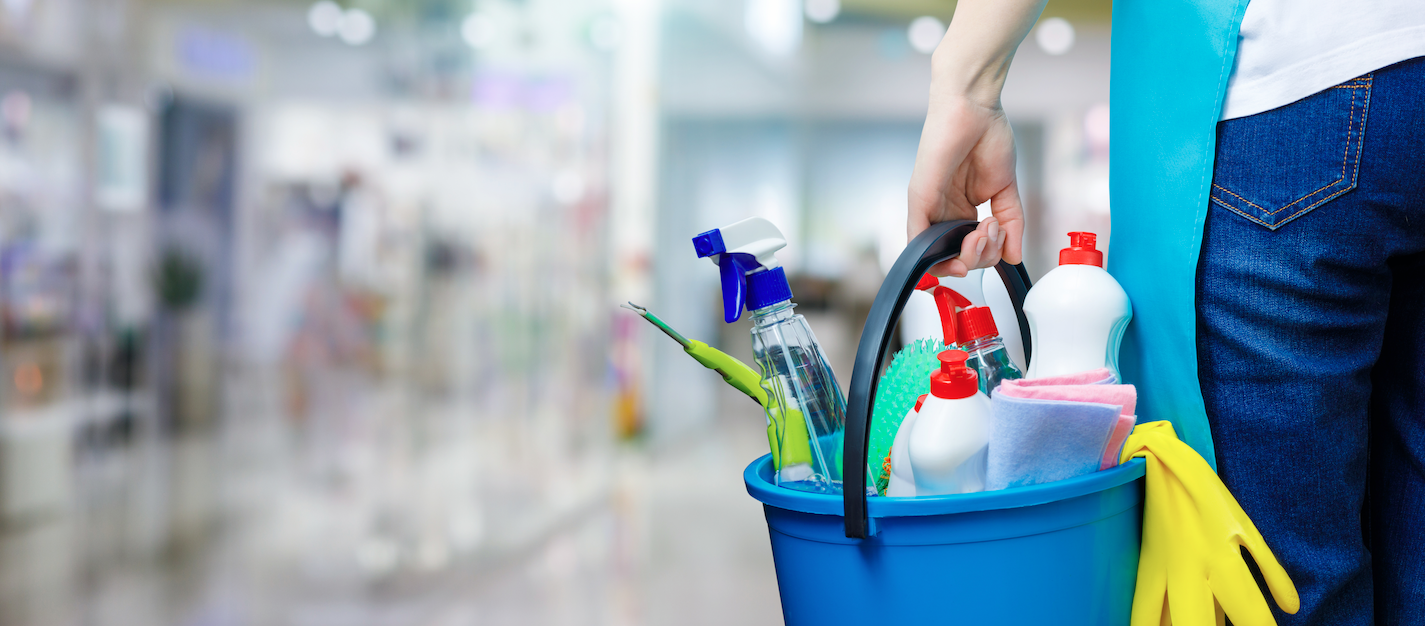
2024-07-12T16:54:51
Sunscreen Travel Tips
- Dermatology
March 19, 2020 | COVID-19

There is still much to learn about COVID-19, but current evidence suggests that the virus may remain viable for hours to days on surfaces made from a variety of materials. Cleaning visibly dirty surfaces followed by disinfection is a best practice measure for the prevention of the virus in households.
As part of your everyday prevention actions against COVID-19, clean and disinfect frequently touched surfaces and objects in your home daily. Always wear disposable gloves when cleaning and disinfecting and remember to wash your hands immediately after removing your gloves. Gloves should be discarded after each cleaning.
Clean
To clean frequently touched surfaces, use soap and water.
Frequently touched surfaces include:
Disinfect
To disinfect your home, use diluted bleach solutions if appropriate for the surface. Make sure your bleach has not passed its expiration date, and follow the instructions on the label to ensure the safe and effective use of the product. Never mix bleach with ammonia or other cleansers. If the surface is visibly dirty, clean the area first with soap and water and then use a disinfectant.
To make a diluted bleach solution, mix:
Alcohol solutions with at least 70% of alcohol can also be used.
Many products recommend keeping the surface wet for several minutes to ensure germs are killed.
Clean hands often
Wash your hands often with soap and water for at least 20 seconds. Remember to wash your hands immediately after removing gloves and after contact with an ill person. If soap and water are not readily available and your hands are not visibly dirty, use a hand sanitizer that contains at least 60% alcohol. Avoid touching your eyes, nose, and mouth with unwashed hands.
Disinfecting your home if someone is sick
If someone in your home becomes sick, in addition to the above-mentioned tips, also follow the below guidelines to help prevent the illness from spreading to others in your family. Choose a room in your home that can be used to separate sick household members from those who are healthy. Identify a separate bathroom for the sick person to use, if possible. The caregiver should consider reducing the cleaning frequency of these rooms to as-needed to avoid unnecessary contact with the ill person. If appropriate, the ill person could clean and disinfect their spaces often including the bathroom after each use if a separate bathroom is not available.
Soft Surfaces
For soft surfaces such as carpet, rugs and drapes, clean the surface using soap and water or with other cleaners appropriate for use on these surfaces. Launder items, if possible, according to the instructions on the label and use the warmest appropriate water setting. Dry items completely.
Laundry
While laundering clothing, towels, linens and other items, always wear disposable gloves and then wash your hands with soap and water as soon as you remove the gloves. Do not shake dirty laundry—this will help minimize the possibility of dispersing the virus through the air. Laundry from an ill person can be washed with other people’s items. Launder items according to the instructions on the label and use the warmest appropriate water setting. Dry items completely. Do not forget to clean and disinfect clothes hampers according to the guidance above for surfaces. If possible, consider placing a bag liner that is either disposable or can be laundered in the hamper.
Food
Ill people in your household should stay separated from the rest of the family, even during mealtimes. Wash all dishes and utensils using gloves and hot water or use a dishwasher. If you chose to use disposable items, handle these items with gloves. Remember to wash your hands immediately after removing gloves and after contact with an ill person.
Trash
If possible, dedicate a lined trash can for the ill person and throw all of their disposable materials in the trash can. When removing the garbage bag and disposing of their trash, wear gloves and wash your hands afterward.
WRITTEN BY:
The Live Better Team


2024-07-12T16:54:51

2024-07-02T11:42:04

2024-07-01T13:49:28

2024-06-21T14:29:51
This information is not intended to replace the advice of a medical professional. You should always consult your doctor before making decisions about your health.